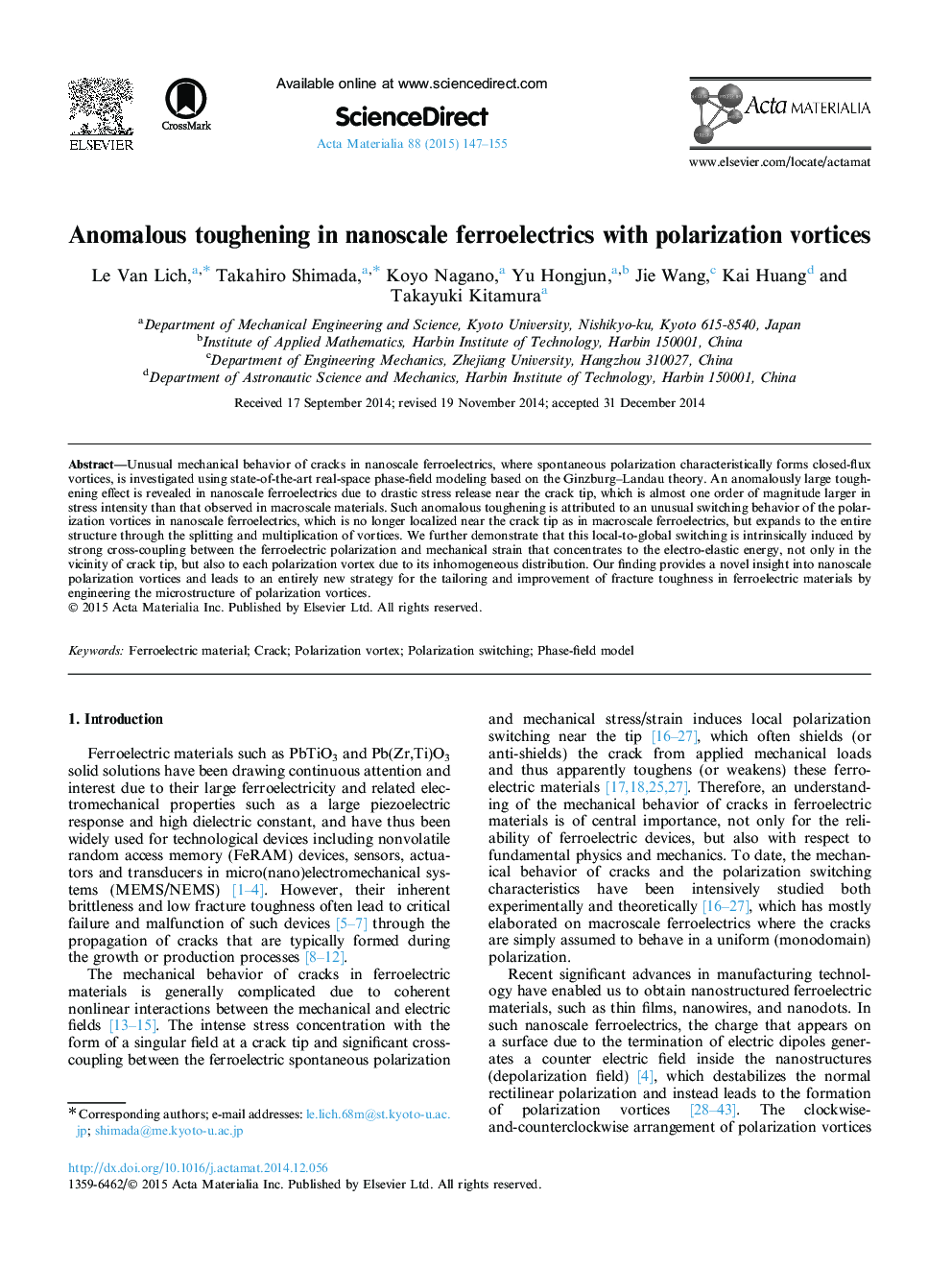| Article ID | Journal | Published Year | Pages | File Type |
|---|---|---|---|---|
| 7880366 | Acta Materialia | 2015 | 9 Pages |
Abstract
Unusual mechanical behavior of cracks in nanoscale ferroelectrics, where spontaneous polarization characteristically forms closed-flux vortices, is investigated using state-of-the-art real-space phase-field modeling based on the Ginzburg-Landau theory. An anomalously large toughening effect is revealed in nanoscale ferroelectrics due to drastic stress release near the crack tip, which is almost one order of magnitude larger in stress intensity than that observed in macroscale materials. Such anomalous toughening is attributed to an unusual switching behavior of the polarization vortices in nanoscale ferroelectrics, which is no longer localized near the crack tip as in macroscale ferroelectrics, but expands to the entire structure through the splitting and multiplication of vortices. We further demonstrate that this local-to-global switching is intrinsically induced by strong cross-coupling between the ferroelectric polarization and mechanical strain that concentrates to the electro-elastic energy, not only in the vicinity of crack tip, but also to each polarization vortex due to its inhomogeneous distribution. Our finding provides a novel insight into nanoscale polarization vortices and leads to an entirely new strategy for the tailoring and improvement of fracture toughness in ferroelectric materials by engineering the microstructure of polarization vortices.
Related Topics
Physical Sciences and Engineering
Materials Science
Ceramics and Composites
Authors
Le Van Lich, Takahiro Shimada, Koyo Nagano, Yu Hongjun, Jie Wang, Kai Huang, Takayuki Kitamura,
